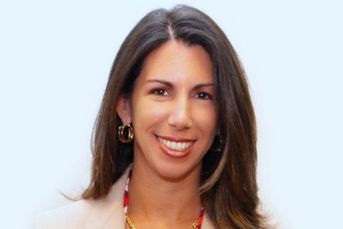Financial decisions made by diverse populations more likely to revolve around others

The new Prudential report surveyed members of diverse populations, including women, black Americans, Asian Americans, Latino Americans and members of the LGBTQ community
Black Americans, Asian Americans and Latino Americans are more likely than the general American population to support their parents and children financially. At the same time, more than half of women are the primary breadwinners in their households.
A new report released today from Prudential explored the financial attitudes within diverse populations, including women, black Americans, Asian Americans, Latino Americans, members of the LGBTQ community and caregivers. Prudential surveyed more than 3,000 Americans between the ages of 25 and 70 for the report, which is an iteration of its first ever financial wellness census.
“The journey to financial wellness is deeply personal,” Lata Reddy, senior vice president for diversity, inclusion and impact at Prudential, said in the report. “While there are common experiences that tie us all together, there are also distinct factors that are unique to our individual journey that impact the financial destination. These factors need to be clearly understood for true progress to be made.”
Within these diverse populations, the study found that there were vast differences between perceptions of financial health and actual objective financial health. A third of those surveyed perceived that they were better or worse off than they actually are. For example, about 12% of those surveyed with strong financial health were pessimistic about their finances. Meanwhile, another 16% who were confident about their finances actually had low financial health.
(More: John Hancock testing wellness programs for long-term-care policyholders)
LGBTQ respondents to the survey have lower incomes than the non-LGBTQ population. The median income for LGBTQ respondents were at $50,000, while non-LGBTQ respondents’ median income come in at approximately $70,000. Thirteen percent of LGBTQ respondents, who face obstacles to financial growth, said that wage inequality due to discrimination was a barrier to their financial success.
The survey revealed an inclination within the black, Asian and Latino populations to prioritize financial goals around their family members, especially in the rise of the sandwich generation, or adult respondents who provide caregiving to elderly parents or special needs children.
“It’s becoming much more common to be in a caretaking role for a family member, especially for families of color,” said Jim Mahaney, vice president of strategic initiatives at Prudential Financial.
Seventy-five percent of high-income black households and 55% of low-income households are more likely to give economic support to others outside their households, compared to 54% and 42% of the general population.
Foreign-born Asians are 50% more likely than the general population to prioritize taking care of parents or other family members. Meanwhile 45% of Latinos are likely to help their children with down payments on their homes, versus 30% of the general population.
Conversely, the LGBTQ community prioritized caring for parents and other family members lower than the other groups. About 45% of LGBTQ women prioritized taking care of family, versus approximately 48% of non-LGBTQ women. Approximately 33% of LGBTQ men responded they prioritized taking care of family, versus approximately 41% of non-LGBTQ men. In fact, LGBTQ men, who are less likely to get married or have children, had the fewest family-related financial goals.
Mr. Mahaney suggested that financial advisers who serve diverse populations and caregivers start asking their clients questions about family outside of their spouse and children, such as their parents, so that advisers can evaluate what financial resources are readily available and can be better prepared down the road.
(More: How financial services firms can help employee caregivers)
Caregivers were found in the study to be more likely than noncaregivers to work with financial advisers. Just under half of caregiver respondents worked with at least one financial adviser, versus only a third of noncaregivers. Regardless, 38% of caregivers did not think they could ever retire, versus just 25% of noncaregivers.
“Otherwise, it might just end up on the shoulders of the adult child,” Mr. Mahaney said.
Learn more about reprints and licensing for this article.








